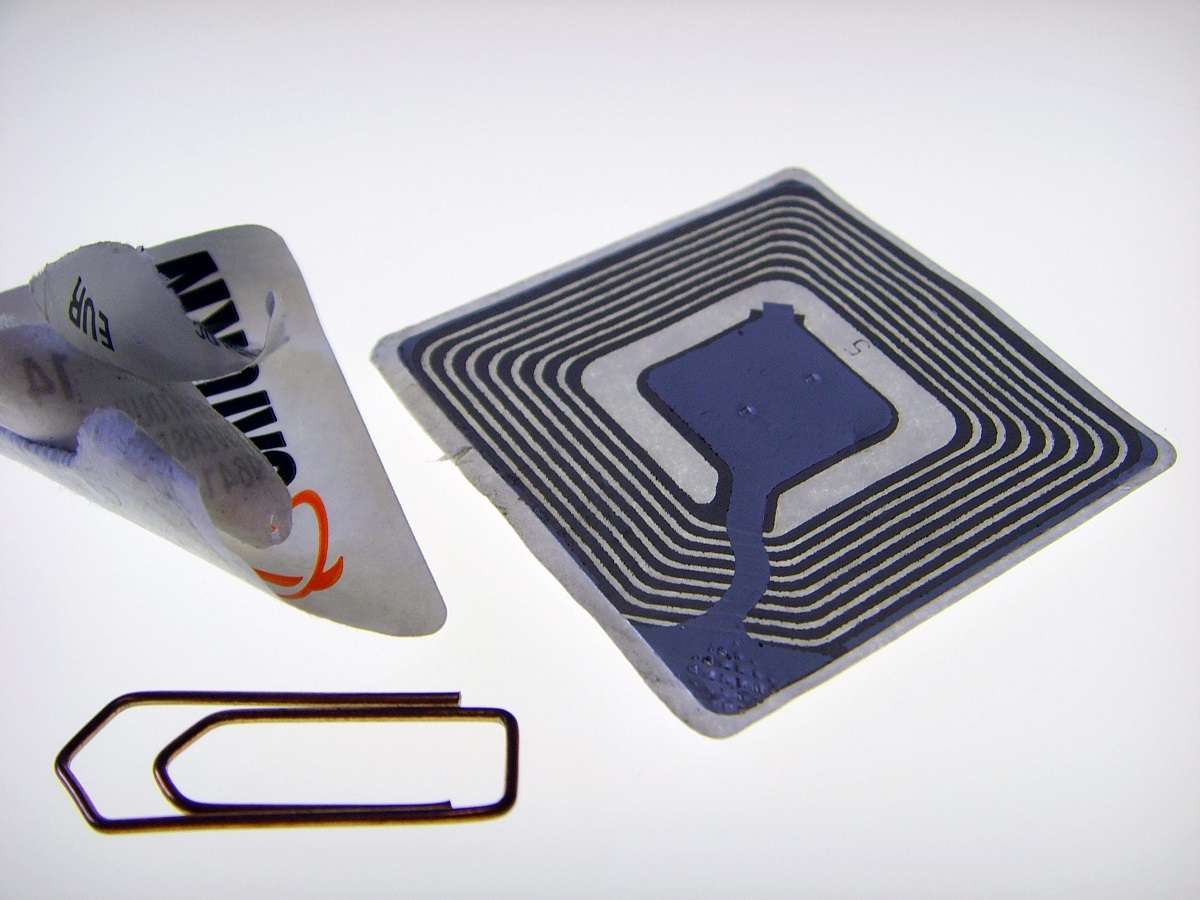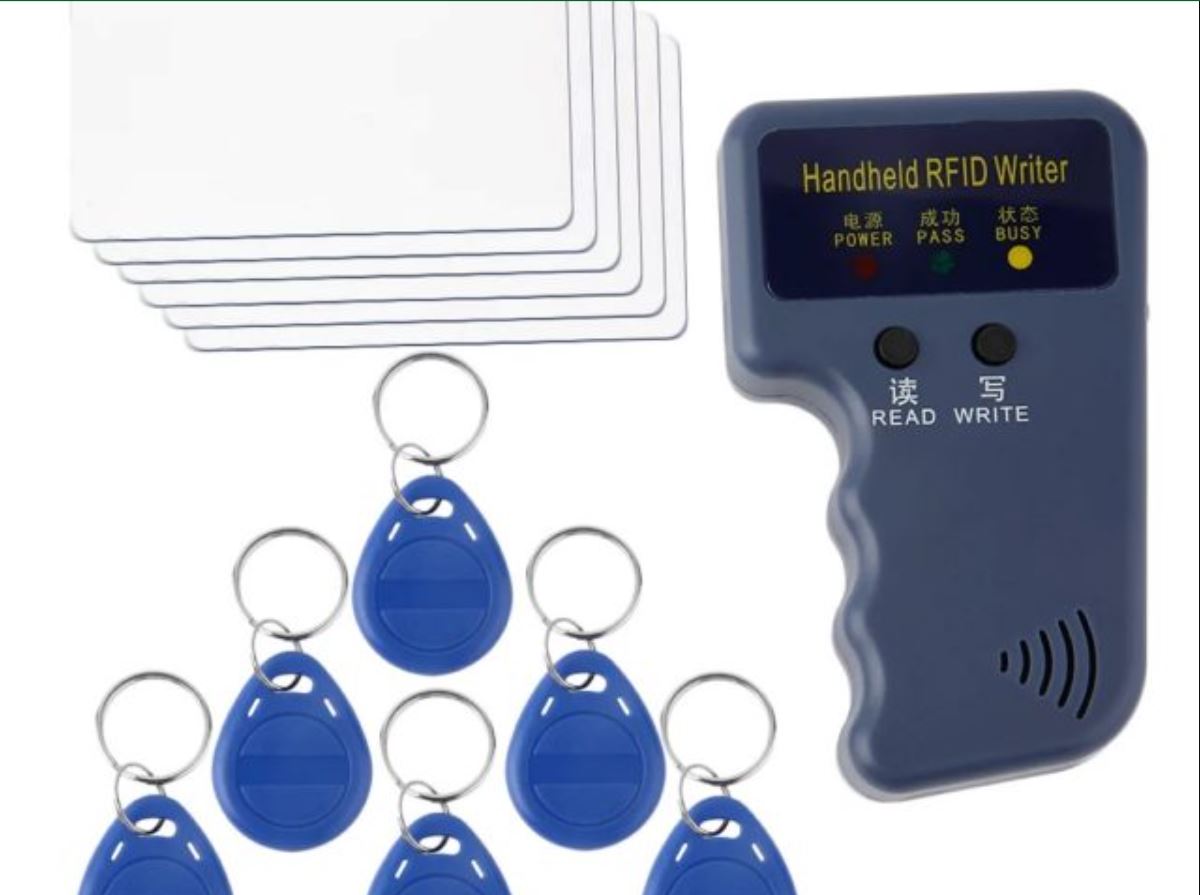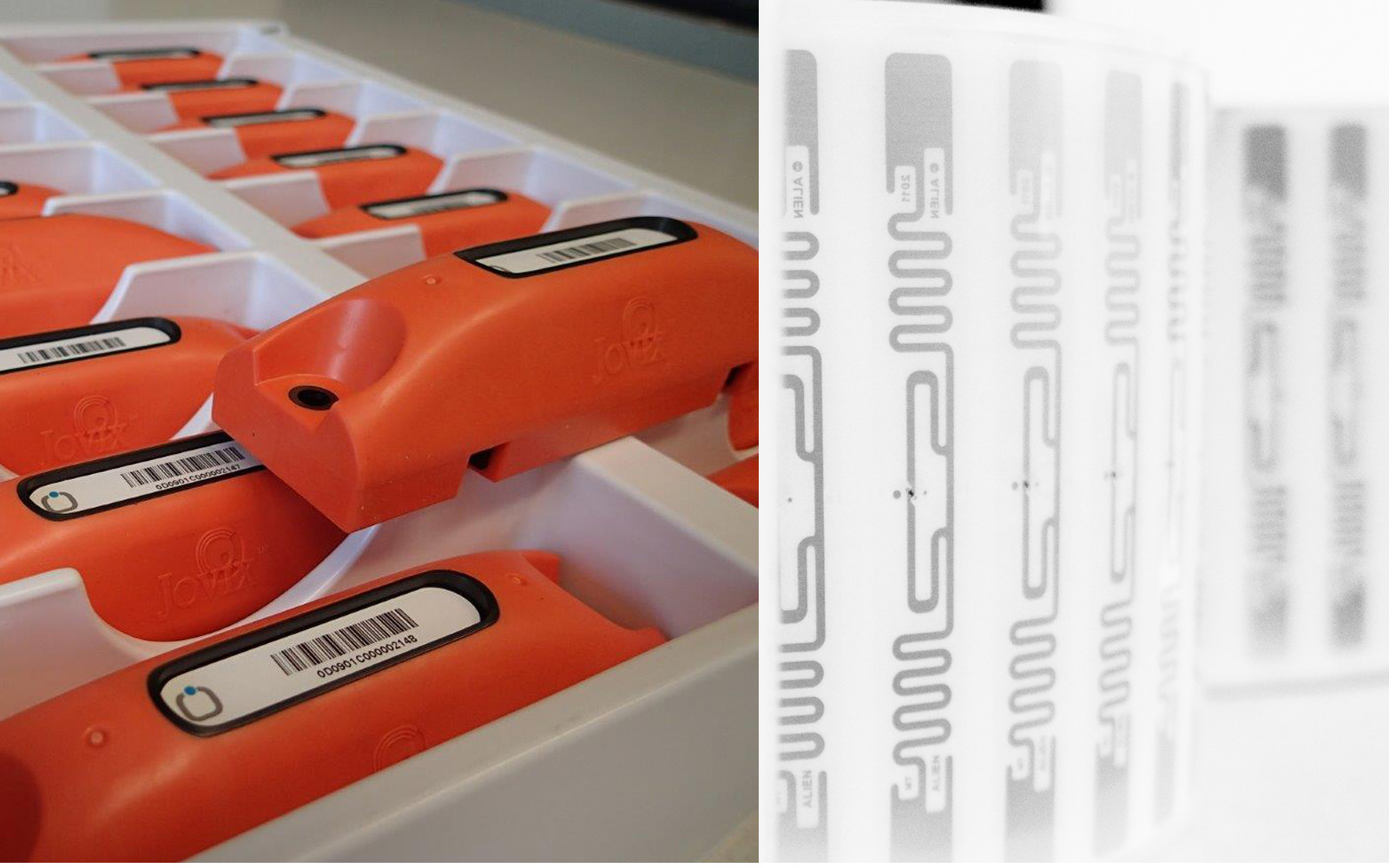Introduction
RFID, short for Radio Frequency Identification, is a technology that has revolutionized the way objects are tracked and identified. It has become increasingly popular in various industries, ranging from supply chain management and healthcare to retail and logistics. By using radio waves to transmit data wirelessly, RFID enables businesses to streamline operations, improve efficiency, and enhance security.
RFID tags, also known as transponders, are at the heart of this technology. These small devices consist of an antenna and a microchip that stores and transmits data when placed within the range of an RFID reader. They come in various shapes, sizes, and types, each designed for different purposes and applications.
The lifespan of RFID tags is a critical factor to consider when implementing an RFID system. Understanding their longevity allows businesses to plan for replacement cycles, calculate costs, and ensure uninterrupted operations. Several factors affect the lifespan of RFID tags, including their physical durability, the environmental conditions in which they are used, and the frequency of use.
In this article, we will delve into the intricacies of RFID tags and explore the various factors that determine their lifespan. We will discuss the durability of RFID tags, the impact of environmental conditions, the frequency of use, and the different types of RFID tags available. By the end, you will have a comprehensive understanding of the factors that contribute to the lifespan of RFID tags, helping you make informed decisions when implementing this technology in your business.
What is RFID?
RFID stands for Radio Frequency Identification, which is a technology used to automatically identify and track objects using radio waves. It allows businesses to efficiently manage inventory, track assets, enhance security, and improve overall operational efficiency.
At its core, RFID comprises three key components: RFID tags, RFID readers, and a back-end system. The RFID tags, also known as transponders, are small devices that contain a microchip and an antenna. These tags are attached to or embedded in objects that need to be identified and tracked. The RFID readers emit radio waves and capture the data encoded in the tags’ microchips. This collected data is then sent to the back-end system, where it is processed and utilized for various purposes.
RFID technology offers significant advantages over traditional identification methods, such as barcode scanning. Unlike barcodes, which require direct line-of-sight and manual scanning, RFID tags can be read wirelessly, even from a distance and without needing a direct line of sight. This makes RFID highly suitable for situations where inventory needs to be quickly and accurately tracked without physical interaction.
Furthermore, RFID tags can store a large amount of data, including unique identifiers, product details, manufacturing dates, and even maintenance history. This rich data can provide valuable insights into the lifecycle of an object and enable businesses to make informed decisions.
RFID technology is widely used across various industries. In retail, RFID can streamline inventory management processes by automatically tracking products from the warehouse to the store shelves. In healthcare, RFID can ensure accurate medication administration and patient identification, reducing errors and enhancing patient safety. Additionally, RFID is employed in logistics and supply chain management to optimize product flow, minimize losses, and improve overall efficiency.
In summary, RFID is a versatile technology that offers numerous advantages in identifying and tracking objects. Its ability to operate wirelessly, store extensive data, and enable seamless integration with various systems makes it a powerful tool for businesses across different sectors.
How do RFID Tags Work?
RFID tags, also known as transponders, work on the principle of radio frequency communication. These small devices consist of an antenna and a microchip, which work together to transmit and receive data wirelessly.
The process begins when an RFID reader emits radio waves through its antenna. These radio waves generate an electromagnetic field around the reader. When an RFID tag comes within the range of this field, it receives power from the electromagnetic energy and becomes activated.
Once activated, the RFID tag sends back a unique identifier or data stored in its microchip to the RFID reader. The communication between the tag and the reader occurs through modulated radio waves.
There are two main types of RFID tags: passive tags and active tags. Passive tags do not have their own power source and rely on the energy emitted by the RFID reader to function. They are cost-effective and lightweight, making them suitable for various applications. When the radio waves from the reader reach the passive tag, it reflects back a signal containing its data to the reader.
On the other hand, active tags have their own power source, typically a battery. They can transmit data over longer distances and have a higher storage capacity compared to passive tags. Active tags constantly emit signals, which can be detected by RFID readers in their vicinity.
In addition to passive and active tags, there are also semi-passive or battery-assisted passive (BAP) tags. These tags have a small battery that powers certain functions, such as chip operation or sensor readings, while still relying on the RFID reader for communication.
RFID technology operates on different frequency bands, including low frequency (LF), high frequency (HF), ultra-high frequency (UHF), and microwave frequency. The choice of frequency depends on the application and the specific requirements of the RFID system.
In summary, RFID tags work by leveraging radio frequency communication. When an RFID tag comes in contact with an RFID reader, it uses the energy transmitted by the reader to send data back to be processed. This wireless and efficient method of identification and data exchange has made RFID technology indispensable in various industries.
Factors that Affect the Lifespan of RFID Tags
The lifespan of RFID tags can vary based on several factors. Understanding these factors is crucial for businesses to maximize the efficiency and durability of their RFID systems. Here are some key factors that affect the lifespan of RFID tags:
1. Physical Durability: The physical durability of RFID tags plays a significant role in determining their lifespan. Tags that are made of robust materials and designed to withstand harsh environments and rough handling tend to have a longer lifespan compared to those that are more fragile. It is important to consider the intended use and potential impact on the tags when selecting the appropriate physical construction.
2. Environmental Conditions: The environmental conditions in which RFID tags are used can have a significant impact on their lifespan. Factors such as temperature extremes, exposure to moisture, chemicals, dust, and UV radiation can degrade the performance and longevity of the tags. It is essential to choose RFID tags that are designed to operate in the specific environmental conditions they will be exposed to.
3. Frequency of Use: The frequency at which RFID tags are used can also affect their lifespan. Tags that are used frequently or subjected to repetitive read and write operations may experience wear and tear faster than tags that are used infrequently. It is important to consider the expected usage intensity and choose tags that are suitable for the anticipated workload to ensure longer lifespan.
4. Types of RFID Tags: The type of RFID tags used can significantly impact their lifespan. Different types of tags, such as passive, active, or battery-assisted passive (BAP) tags, have varying power sources and capabilities. Active tags, powered by a battery, generally have a longer lifespan compared to passive tags, which rely on energy from the RFID reader. However, the specific use case and requirements should be evaluated to determine the most appropriate tag type.
5. Shelf Life: RFID tags can also have a designated shelf life, which refers to the period during which the tags are expected to remain functional while in storage or before being deployed. It is crucial to take into account the shelf life of the tags and plan their usage accordingly to ensure optimal performance.
By considering these factors and selecting RFID tags that are well-suited for the operational environment, businesses can prolong the lifespan of their RFID systems and maximize their return on investment. Regular maintenance, such as cleaning and inspecting the tags, can also contribute to extending their lifespan.
Physical Durability
The physical durability of RFID tags is a critical factor that influences their lifespan. RFID tags encounter various physical stresses throughout their lifecycle, and their ability to withstand these stresses determines how long they will remain functional. Here are key aspects of physical durability to consider when evaluating RFID tags:
1. Construction Materials: The materials used in the construction of RFID tags significantly impact their durability. Tags made from robust materials, such as reinforced plastics or composites, are more resistant to bending, moisture, and temperature fluctuations. This ensures that the tags can withstand harsh conditions and continue to function optimally for an extended period.
2. Encapsulation: The encapsulation of RFID tags provides an additional layer of protection against physical damage. The encapsulation materials, such as epoxy resin or silicone, protect the internal components of the tag from moisture, chemicals, and impact. A well-encapsulated tag is less prone to breakage and can endure demanding environments.
3. Mounting Options: The method used to mount RFID tags also affects their physical durability. Tags that are securely attached to objects, either through adhesive backing, rivets, or specialized fasteners, are less likely to get dislodged or damaged during handling or movement. Proper mounting ensures the tags remain in place, maintaining their functionality throughout the lifespan.
4. Resistance to Environmental Factors: The ability of RFID tags to endure environmental factors contributes to their physical durability. Tags that are designed to resist moisture, chemicals, and temperature extremes can withstand exposure to harsh industrial environments, outdoor conditions, or even immersion in water. Having tags that can withstand these factors ensures their longevity and reliable performance.
5. Impact Resistance: RFID tags may undergo physical impacts during handling, transportation, or storage. Tags with reinforced structures, shock-absorbing materials, or protective coatings can withstand these impacts without sustaining damage. Impact-resistant tags remain functional and ensure continuous tracking and identification capabilities.
It is crucial to consider the intended application and environment when selecting RFID tags based on their physical durability. For example, in industries such as manufacturing or logistics where objects are subject to rough handling or extreme conditions, using highly durable tags is essential to ensure uninterrupted performance and longevity.
Regular inspection, maintenance, and replacement of worn-out or damaged tags are also recommended to maintain an efficient and effective RFID system. By paying attention to the physical durability of RFID tags, businesses can optimize their investment and achieve long-lasting benefits from their RFID applications.
Environmental Conditions
Environmental conditions play a significant role in determining the lifespan of RFID tags. Factors such as temperature variations, moisture levels, exposure to chemicals, dust, and UV radiation can impact the performance and longevity of the tags. Understanding the environmental conditions in which RFID tags will be deployed is crucial for selecting the most suitable tags. Here are key aspects to consider:
1. Temperature Extremes: Excessive heat or cold can affect the functionality of RFID tags. Tags that are exposed to extreme temperatures may experience changes in their material properties or encounter thermal expansion and contraction, leading to reduced performance or physical damage. Choosing tags with a wide temperature range that can withstand the specific temperature variations in the operating environment is crucial for their longevity.
2. Moisture and Humidity: Moisture and humidity can have a detrimental effect on RFID tags, especially those with exposed metal components. Moisture can cause corrosion, leading to tag malfunction or failure. Tags designed with water-resistant or waterproof materials, as well as proper encapsulation, can withstand exposure to moisture and humidity, ensuring their prolonged functionality.
3. Chemical Exposure: RFID tags used in environments with corrosive chemicals need to be resistant to chemical exposure. Chemicals can degrade the tag’s materials or affect its electronic components, leading to reduced performance or failure. Utilizing tags that are made of chemically resistant materials and have appropriate protective coatings can prolong their lifespan in challenging chemical environments.
4. Dust and Particulate Matter: Dust, dirt, and other particulate matter can accumulate on RFID tags, potentially impairing their performance. Tags with sealed enclosures or protective films can prevent dust ingress, ensuring reliable operation even in dusty environments. Regular cleaning and maintenance can also help to mitigate the impact of dust and maintain the effectiveness of the RFID tags.
5. UV Radiation: Exposure to direct sunlight or strong UV radiation can cause discoloration, material degradation, or even electronic component damage in RFID tags. UV-stable materials or tags with UV-resistant coatings can withstand prolonged exposure to sunlight or UV radiation, ensuring their longevity in outdoor applications.
It is essential to assess the specific environmental conditions in which RFID tags will be deployed and select tags that are designed to operate in those conditions. Manufacturers provide specifications indicating the environmental ratings of their RFID tags, ensuring compatibility with the intended application. Regular monitoring and preventive measures, such as shielding or protective covers, can help mitigate the negative effects of environmental conditions and extend the lifespan of RFID tags.
Frequency of Use
The frequency at which RFID tags are used has a direct impact on their lifespan. Tags that undergo frequent read and write operations or are subjected to repetitive usage may experience wear and tear faster than those used infrequently. Here are key points to consider regarding the frequency of use and its effect on RFID tags:
1. Read and Write Operations: RFID tags are designed to handle a certain number of read and write operations throughout their lifespan. Each time a tag is read or information is written to it, it undergoes a certain level of stress. Tags that are constantly interacted with, such as those used in inventory management or asset tracking systems, may reach their operational limits more quickly compared to tags used in less dynamic applications.
2. Write Cycles: Some RFID tags have a limited number of write cycles before they start to show signs of deterioration. Each time new data is programmed into the tag, it consumes a portion of the available write cycles. Tags used in applications where frequent data updates or overwrite operations are required may have a shorter lifespan due to the limited number of write cycles allowed.
3. Durability of Memory Cells: The memory cells in RFID tags have a finite lifespan. Frequent read and write operations can cause the memory cells to degrade over time, leading to read errors or loss of data integrity. Tags with high-quality memory cells or more advanced memory management techniques tend to have a longer lifespan and can sustain a higher frequency of usage.
4. Power Drain: Active or battery-powered RFID tags consume power with each read or write operation and may require periodic battery replacement or recharging. The frequency at which power is consumed affects the overall lifespan of the active tags. Tags that have longer battery life or efficient power management capabilities can sustain higher usage frequencies before needing power-related maintenance.
5. Quality of Tags: The quality and reliability of RFID tags play a role in their ability to withstand frequent usage. Tags from reputable manufacturers with a proven track record of producing robust and durable RFID products tend to have a longer lifespan, even under high-frequency usage scenarios.
To maximize the lifespan of RFID tags under frequent usage, it is crucial to select tags that are specifically designed for high-usage applications. Regular maintenance and monitoring of tags, as well as periodically evaluating the quality of the tags used, can help detect any signs of wear or performance degradation and allow for timely replacement. By understanding the frequency of use and selecting appropriate tags, businesses can ensure the longevity and reliability of their RFID systems.
Types of RFID Tags
RFID technology offers various types of tags, each designed with specific features and capabilities to suit different applications and requirements. Understanding the different types of RFID tags can help businesses choose the most suitable option for their specific needs. Here are the two main types of RFID tags:
1. Passive RFID Tags: Passive RFID tags do not have their own power source and rely on the electromagnetic energy emitted by RFID readers to function. When a passive tag comes within the range of a reader’s electromagnetic field, it absorbs energy from the field and uses it to power up and transmit data back to the reader. Passive tags are cost-effective and have a relatively simple design. They are commonly used for applications such as inventory management, access control, and supply chain tracking.
2. Active RFID Tags: Active RFID tags, unlike passive tags, have their own power source, typically a battery. The battery powers the tag’s operation and enables it to transmit signals over longer distances. Active tags have a higher transmission range and can provide real-time monitoring and tracking capabilities. They are well-suited for applications that require continuous tracking, such as vehicle tracking, asset management, and high-value item tracking. However, active tags are comparatively more expensive and have a limited battery life that requires maintenance or replacement.
In addition to passive and active tags, there is also a hybrid type called battery-assisted passive (BAP) tags. BAP tags combine the characteristics of both active and passive tags. They use battery power to boost their performance when communicating with readers, but otherwise, they rely on the reader’s energy to function. BAP tags offer a balance between extended read range and cost-effectiveness, making them suitable for applications that require longer communication distances but don’t require continuous tracking.
The selection of the appropriate RFID tag type depends on various factors, including the required read range, the desired level of tracking or monitoring, the cost constraints, and the specific environmental conditions. Businesses should evaluate their needs and consult with RFID solution providers to determine the most suitable tag type for their application.
It’s important to note that within each type of RFID tag, there are further variations based on operating frequency, memory capacity, and other functionalities. These variations allow for customization and enable businesses to choose tags that align precisely with their requirements.
Passive RFID Tags
Passive RFID tags are a popular type of RFID technology that does not require their own power source to operate. Instead, they rely on the energy transmitted by RFID readers to power up and transmit data. Passive RFID tags consist of an antenna and a microchip, and their design allows for cost-effective and widespread deployment in various applications. Here are key points to understand about passive RFID tags:
1. Power Source: Passive RFID tags do not have an onboard power source such as a battery or external power supply. They rely on the electromagnetic energy emitted by RFID readers to activate and transmit data. When the tag comes within the range of the reader’s electromagnetic field, it absorbs energy from the field, which powers up the tag’s microchip.
2. Read Range: Passive RFID tags have a limited read range compared to active or battery-assisted passive (BAP) tags. Typically, the read range of passive tags ranges from a few centimeters to several meters, depending on the specific tag and reader used. Factors such as the frequency of operation and the strength of the reader’s signal can affect the read range of passive tags.
3. Cost-Effectiveness: Passive RFID tags are generally more cost-effective compared to active tags. This is mainly due to their simpler design and lack of a power source. The absence of a battery or power supply reduces both the manufacturing and maintenance costs associated with passive tags, making them an economical choice for large-scale deployments.
4. Use Cases: Passive RFID tags find application in a wide range of industries and use cases. They are commonly used for inventory management, asset tracking, access control, and supply chain logistics. For example, retail stores use passive RFID tags to track and manage inventory on store shelves, while logistics companies use them to track shipments and monitor the movement of goods.
5. Reading Method: When a passive RFID tag is within the read range of an RFID reader, it reflects a portion of the energy from the reader back to the antenna of the reader. This reflected energy carries the data stored in the tag’s microchip, which is then captured and interpreted by the reader. The reader processes the data and transfers it to a backend system for further analysis or action.
It’s important to select the appropriate passive RFID tag based on the specific requirements of the application. Factors such as read range, performance in different frequencies and environments, tag size, memory capacity, and durability should be considered when choosing the right passive tags to meet the intended objectives.
Overall, the cost-effectiveness, ease of deployment, and widespread adoption of passive RFID tags make them a popular choice for a wide range of applications where real-time tracking, identification, and inventory management are essential.
Active RFID Tags
Active RFID tags are a type of RFID technology that differs from passive tags in that they have their own power source, typically a battery. The presence of a battery allows active tags to transmit signals autonomously, providing features that passive tags cannot deliver. Here are key points to understand about active RFID tags:
1. Power Source: Active RFID tags are equipped with a battery that powers their operation. The battery supplies power to the tag’s microchip and antenna, allowing it to transmit signals and maintain continuous communication with RFID readers. The battery capacity varies depending on the tag and can range from several months to several years.
2. Read Range: Active RFID tags have a longer read range compared to passive tags. They can transmit signals over a greater distance, typically ranging from tens to hundreds of meters, depending on the specific tag and reader used. The longer read range of active tags makes them well-suited for applications that require tracking and monitoring over larger areas, such as vehicle tracking or asset management in large facilities.
3. Real-Time Tracking: Active tags support real-time tracking capabilities. With their onboard power source and autonomous signal transmission, they can continuously communicate with RFID readers, providing real-time location updates. This makes active tags ideal for applications that require constant monitoring, such as in healthcare facilities for tracking equipment or in military settings for asset management.
4. Cost Considerations: Active RFID tags are generally more expensive compared to passive tags due to the inclusion of a battery and the additional functionality they offer. The cost of the battery replacement or recharging should also be taken into consideration for long-term deployments.
5. Use Cases: Active RFID tags find application in various industries and use cases. They are commonly used for tracking high-value assets, monitoring cargo shipments, managing vehicle fleets, and ensuring the safety and security of personnel in hazardous environments. The ability to provide real-time tracking and monitoring capabilities makes active tags valuable for applications that require up-to-date information and prompt action.
It’s important to consider the specific requirements of the application when choosing active RFID tags. Factors such as read range, battery life, data transmission frequency, environmental durability, and integration capabilities with existing systems should be considered to ensure optimal performance and value.
Overall, active RFID tags offer advanced features and greater autonomy compared to passive tags. They provide extended read range and real-time tracking capabilities, making them suitable for applications where continuous monitoring, asset tracking, and security are crucial.
Shelf Life of RFID Tags
The shelf life of RFID tags refers to the period during which the tags can be stored and maintained while retaining their functionality and performance. The shelf life may vary depending on the type of tag, environmental conditions, and the specific manufacturer’s specifications. Here are key points to consider regarding the shelf life of RFID tags:
1. Manufacturer Specifications: Each RFID tag manufacturer provides specifications indicating the recommended shelf life of their tags. These specifications describe the conditions, such as temperature and humidity, under which the tags can be stored for an extended period without impairing their performance. It is important to follow the manufacturer’s guidelines to ensure optimal shelf life.
2. Storage Conditions: Proper storage conditions are crucial for maintaining the shelf life of RFID tags. Tags should be stored in cool, dry environments to prevent moisture buildup, corrosion, or material degradation. Exposure to extreme temperatures, direct sunlight, or high humidity can shorten the shelf life of the tags. Storing tags in protective packaging, such as antistatic bags or boxes, can also help prevent damage during storage.
3. Battery Life for Active Tags: For active RFID tags that have a battery as their power source, the shelf life is primarily determined by the battery life. The battery shelf life indicates how long the battery can retain its capacity while in storage without being used. Manufacturers usually state the battery shelf life along with the tag’s overall shelf life. Proper storage of active tags, including maintaining optimal temperature conditions, ensures that the battery retains its capacity during storage.
4. Passive Tag Durability: Passive RFID tags, which do not have a battery, generally have a longer shelf life compared to active tags. Their relatively simple construction and lack of an internal power source contribute to their ability to remain functional for a more extended period. As long as they are stored properly, passive tags can retain their functionality and performance for an extended shelf life.
5. Regular Maintenance: Regular maintenance and periodic monitoring of RFID tags can help ensure their longevity, even during storage. This includes inspecting tags for any signs of physical damage, corrosion, or material deterioration. Properly maintained tags can be identified and replaced if necessary before they are deployed for operational use.
It is important to note that the shelf life of RFID tags does not indicate the operational lifespan of the tags once they are deployed. The operational lifespan can be influenced by factors such as usage intensity, environmental conditions, and the physical wear and tear that occur during the tag’s active deployment.
By considering manufacturer specifications, maintaining appropriate storage conditions, and conducting regular maintenance, businesses can maximize the shelf life of RFID tags and ensure that they function reliably when deployed in operational settings.
Conclusion
RFID technology has revolutionized the way objects are tracked and identified, offering businesses numerous benefits in terms of efficiency, security, and operational optimization. Understanding the factors influencing the lifespan of RFID tags is essential in maximizing the value and longevity of RFID systems.
Factors such as physical durability, environmental conditions, frequency of use, and the type of RFID tags all play a significant role in determining the lifespan of RFID tags. Choosing tags that are constructed with durable materials and designed to withstand harsh conditions can extend their lifespan. Environmental factors, including temperature, moisture, chemicals, dust, and UV radiation, should be taken into consideration to ensure optimal tag performance and longevity.
The frequency of use affects the lifespan of RFID tags, as regular read and write operations and repetitive usage may result in wear and tear. Careful selection of tag types, such as passive, active, or battery-assisted passive, based on the specific requirements of an application, can help align the tag’s capabilities with its expected usage intensity.
Passive RFID tags, which rely on the energy emitted by RFID readers, are cost-effective and suitable for applications such as inventory management and supply chain tracking. Active RFID tags, powered by a battery, offer longer read ranges and real-time tracking capabilities, making them ideal for applications like asset management or vehicle tracking.
Understanding the shelf life of RFID tags is crucial for proper storage and maintenance. Following manufacturer specifications, storing tags in optimal conditions, and conducting regular inspections contribute to maximizing the shelf life of RFID tags.
In summary, by considering the various factors and selecting the appropriate RFID tags for specific applications, businesses can ensure the longevity and effectiveness of their RFID systems. The lifespan of RFID tags directly impacts the return on investment and the overall success of implementing RFID technology in various industries, enabling streamlined operations, improved efficiency, and enhanced asset tracking capabilities.

























